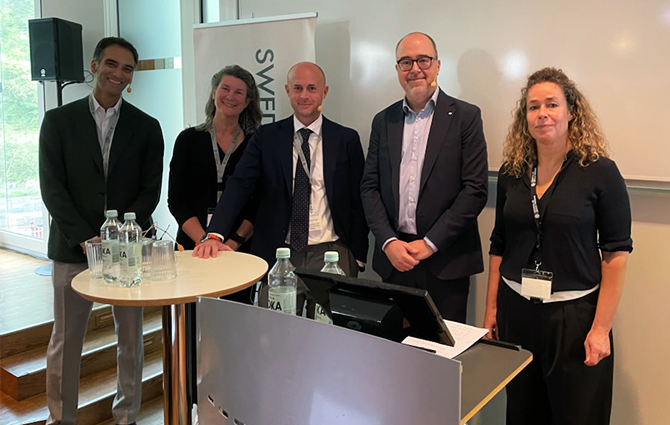Experts Urge Debt Reform as Over-Indebtedness in Sweden Rises
sep. 24, 2024
Sweden is grappling with its largest rise in household over-indebtedness since the 1990s, with unpaid debt at Kronofogden (the Swedish Enforcement Authority) jumping 17% to 119 billion SEK over the past year. At a conference hosted by the Swedish House of Finance, policymakers, researchers, and industry leaders discussed whether Sweden’s financial system should adopt a more lenient stance on household debt relief.

Tighter Oversight Needed
Johan Almenberg, State Secretary to the Minister for Financial Markets, opened the panel by outlining the regulatory landscape in Sweden. He noted that while the government has implemented a range of reforms, including measures to increase supervision of non-bank consumer credit providers, there is still more to be done.
“We’ve seen rapid growth in consumer credit, and the digital financial landscape makes it even easier to market these loans at low costs,” he said. “We need to stay ahead by making sure lenders properly assess creditworthiness.”
Starting March 1, 2025, Sweden will implement new regulations to curb predatory lending, including a lower interest rate cap, stricter fee limits, reduced costly maturity extensions, and tougher rules on credit marketing to protect consumers from excessive borrowing, Almenberg said.
“By making these loans more expensive, we hope to curb their use and prevent more people from falling into the debt trap,” he said.
The Human Side of Debt
Lena Petersson, author of Skuldsatt, highlighted the personal and societal toll of debt, criticizing predatory lending practices in Sweden.
"Unpaid loans have become a brilliant business model," she said, challenging the misconception that debt stems from reckless spending. Instead, she pointed to unemployment, illness, and divorce as the main causes of over-indebtedness.
Petersson called for a more compassionate debt relief system, arguing that it disproportionately favors lenders, whom she said enjoy "the right to fail," while borrowers face excessive regulations and scrutiny.
"It's time to reconsider the moral implications of this imbalance," she said.
The Role of State
Kronofogden’s Fredrik Rosengren revealed that the agency is overwhelmed with cases of unpaid debt, many of which are becoming increasingly complex.
“We’re seeing more people who are not your typical debtors. They have jobs, they own homes, but they’re unable to pay their bills,” he explained, attributing much of the rise in debt to the high costs of living, inflation, and increased interest rates.
Rosengren also underscored the need for systemic change, suggesting that stricter regulations on lending practices could ease the burden on Kronofogden.
“The tools we have are very intrusive—we can seize assets, including homes—but these measures should be a last resort,” he said. He also warned that rising debt levels could have long-term effects on families and society, stating, “Living in financial distress leaves scars that last a lifetime.”
Debt Relief and Systemic Change: Perspective from the U.S.
While there is consensus on the need for reform, the path forward remains complex. Almenberg noted that government efforts focus more on preventing debt than on providing relief for those already struggling and acknowledged that more needs to be done for those in deep financial distress.
Stanford's Neale Mahoney, drawing on the U.S. experience, pointed out that lenient bankruptcy laws can act as a check on the supply of risky credit.
"Helping people get out of debt provides feedback loops that encourage responsible lending," he said, suggesting that Sweden could benefit from a similar approach, especially as digital services make risky lending easier.
Sasha Indarte from Wharton highlighted that many eligible households fail to take advantage of debt relief due to complexity, stigma, and lack of information.
"Households are leaving a lot of money on the table," she said, noting that fears of damaged credit or job prospects often prevent people from seeking help. Her research suggests simplifying debt relief and improving awareness could help more households.
Yale’s Paul Goldsmith-Pinkham added that generous debt relief in the U.S. is critical due to its weaker social safety nets.
"In Europe, stronger social insurance may reduce the need for such relief, as it provides some of the same protections," he said.

